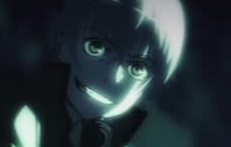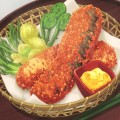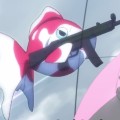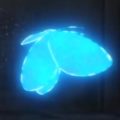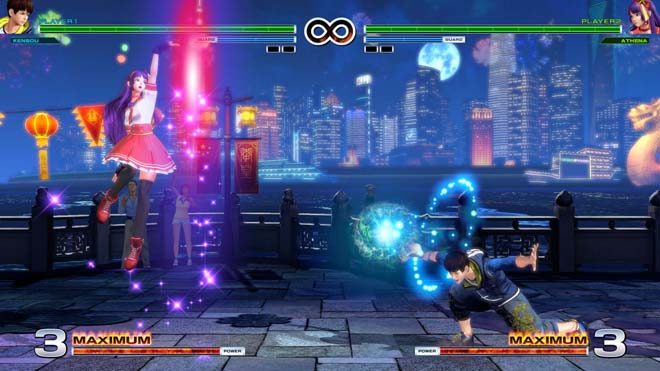One and Done- One Punch Man

It just seemed like a boring series, “One Punch Man,” sounding like a generically short shounen series which would just plod along before abruptly getting chopped off at the end. Even large numbers of cosplayers and several individuals giving glowing recommendations did little to sway me until I watched it one evening as part of a sampler anime marathon. The results were quite amusing, and very surprising.
“One Punch Man” follows the story of Saitama, a bored individual living a seemingly monotonous live in Z-City, except he has the ability to defeat any of the quite frequent invading monsters that terrorize the town with just one punch of his fist. Now, most characters would love to possess that sort of power, but for Saitama, having this ability is more of a curse than an asset, as he is constantly disappointed that his opponents are unable to give him a worthy fight, leaving him bored and wanting more out of life. While his efforts earn him the admiration of Genos, a cyborg who eventually becomes Saitama’s disciple, the town does not take notice of Saitama’s efforts and either shower praise on Genos or criticize Saitama for causing collateral damage. The story begins as mostly episodic and simplistically, with very creative designs chosen for the antagonists, and one can’t help but laugh at Saitama’s airheadedness and the things that set him off (such as missing sales at the grocery store). Completely unintimidated by his opponents’ taunts, one still wonders if every one of his new opponents could really be defeated with one punch as thankfully, there is no introduction given before each episode to taint the series.
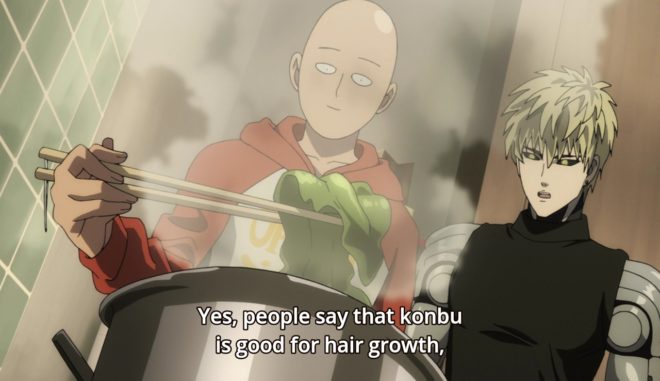
Somehow, “One Punch Man” is able to smoothly execute a sharp turn in the middle of the series, when it is revealed that Saitama’s lack of recognition is due to him not being registered as an official hero with the necessary association. For a decent laugh, do check out how he takes the physical tests, his subsequent ranking and then get either angry or incredulous at the citizens’ reactions towards him being an official hero. One’s outward feelings toward Saitama can be seen in Genos’ evolving relationship towards his mentor and whenever Saitama reveals his motivations for being a hero. Saitama has little dialogue throughout the series, but this is a philosophy of “speak softly and carry a big stick,” instead of lazy writing. When Saitama does speak, even the slightest expression of stoicness is amplified. Now, as the story introduces the concept of a hero association, it is natural to have comparisons to “Tiger and Bunny,” but the execution here is less successful as the association concept is oftentimes distracting and the execution is very clunky. Hero rankings are only somewhat correlated to a hero’s strength and is instead focused more on popularity and perception. Then there is the issue of having so many heroes- for a 12-episode series, there are at least 2 dozen heroes introduced, each with his or her own power, and most of them only show up for a few minutes before being tossed aside for the rest of the series and a new hero showing up in an attempt to fight the new opponent. Given more episodes, this abundance of characters could have been put to better use and other side hero characters could have been developed more. It is always apparent who is the big kahuna in the series, but the fact that Saitama himself downplays instead of glorifies it is a breath of fresh air.
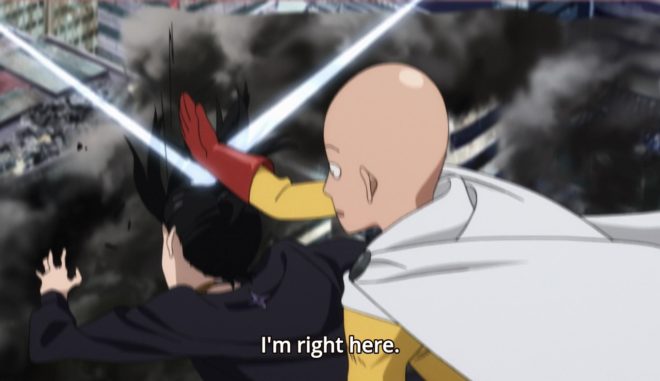
The introduction of the association also changes the structure of the plot, as fighting an invading monster now takes up several episodes, so the plot is able to somewhat flesh out, but as a whole, “One Punch Man” isn’t too deep and never seems to take itself seriously at all. Instead, the overwhelming emotion is humor, whether one laughs at Saitama’s antics or his one-sided fights, or it is awe, again with Saitama’s fights or how other heroes try to act tough against him. Awe was what I felt during the battle sequences, which features mostly simplistic animation, quite a lot of streaks to enhance the feeling of forceful motions, and lots of growling and taunting by both the antagonists and side protagonists. The side heroes’ powers are nothing new, but the battles are nonetheless very entertaining to watch and are the series’ best asset as each character attempts to make himself or herself seem larger than life, with extroversion and power levels during battles nipping at the heels of “Gurren Lagann” or “Kill la Kill.” However, though the animation is adequate, one can’t help but notice the patchwork and inconsistent drawing quality throughout the series. There are some scenes which have quite a lot of shading and shadow work to give a certain level of grit and texture, but other scenes revert to harsh, generic coloration and are very overexposed. There’s also no sense of unity and few attempts to make things look stylish or beautiful, just an amalgamation of styles and shapes cut and pasted to form the background, characters, and foreground, making the series look and feel very utilitarian. However, the final set of villains do have some creative designs, and somehow, while the ending still feels chopped off, it is done with, obviously, a laugh, but also with a certain degree of finesse. Think finely crafted katana versus dull machete.
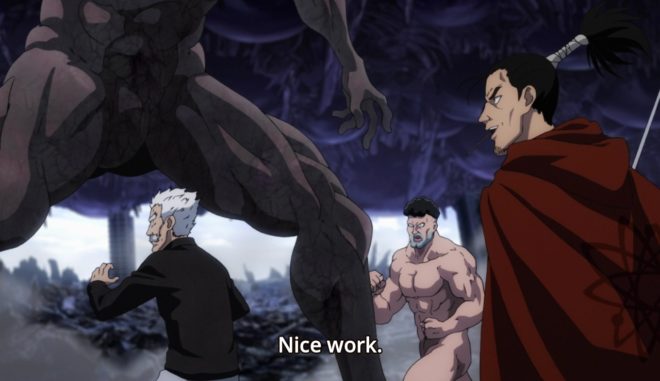
Nonetheless, 12 episodes is not enough for “One Punch Man,” and the series could have easily been twice as long. There is very little character development, and the plot is very simplistic, but the point of this series is one of entertainment and not taking itself seriously at all. Instead, laugh when Saitama’s airheadedness gets mixed in with the always-serious Genos. Grin and snicker at how quickly and often the tide changes during battles and be amused at the moves each individual makes during the battles. It’s a breath of fresh air, and a different spin on the typical shounen series. Best of all, after you are finished with the main series, there are also 7 short OVA episodes for your viewing pleasure. Enjoy.

